How to Dehydrate Lemons
Dehydrate lemons and create a bounty of sunshine all year long. They are perfect for snacking, baking, cooking, and for decor! It’s so easy to just slice and dry this citrus!
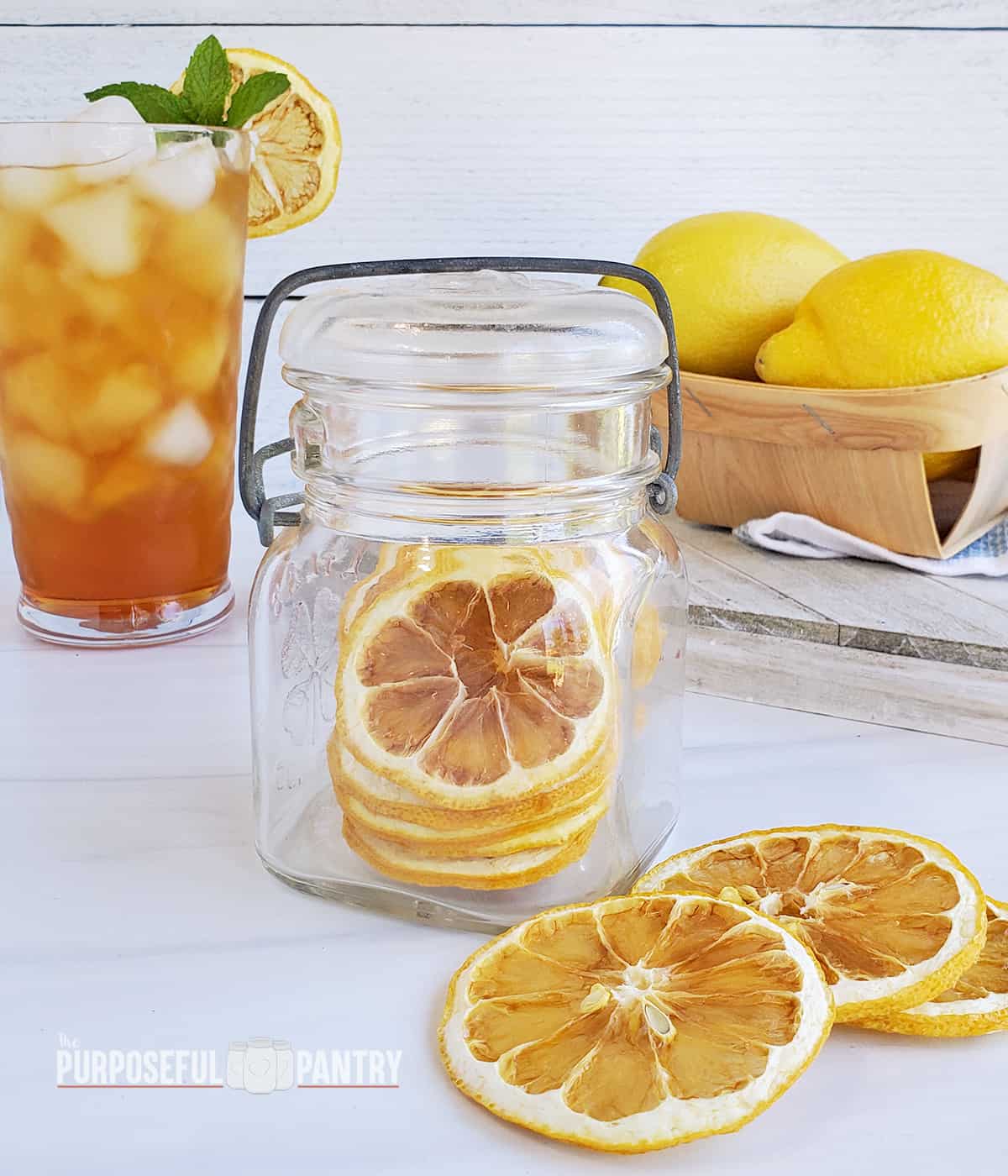
While citrus fruit season is in the late winter and early spring in North America, good lemon varieties are available all year round. You can take advantage of a great harvest season or a good sale and dry your lemons for use any time of the year!
Sliced, dried lemons are great for adding to tea, cooking fish or chicken, making powder for lemon pepper, and so many more ideas!
Types of Lemon to use:
- Lisbon lemons (the most commonly found in US grocery stores)
- Meyer lemons
- Eureka lemons
- Bearss lemons
Of course, your area may have many other varieties for you to experiment with, too!
How to Dehydrate Lemons
Quick-drying FAQ: Dry at 125°F/52°C for 18-36+ hours until dehydrated lemon slices snap when cooled and no moisture in any of the cells.
Step one
Wash lemons thoroughly. Even if using organic, you should soak and wash the orange to remove any residue and wax on the skin.
Soak in a 50/50 solution of water and vinegar for about 15 minutes. Scrub with baking soda if you feel it necessary.
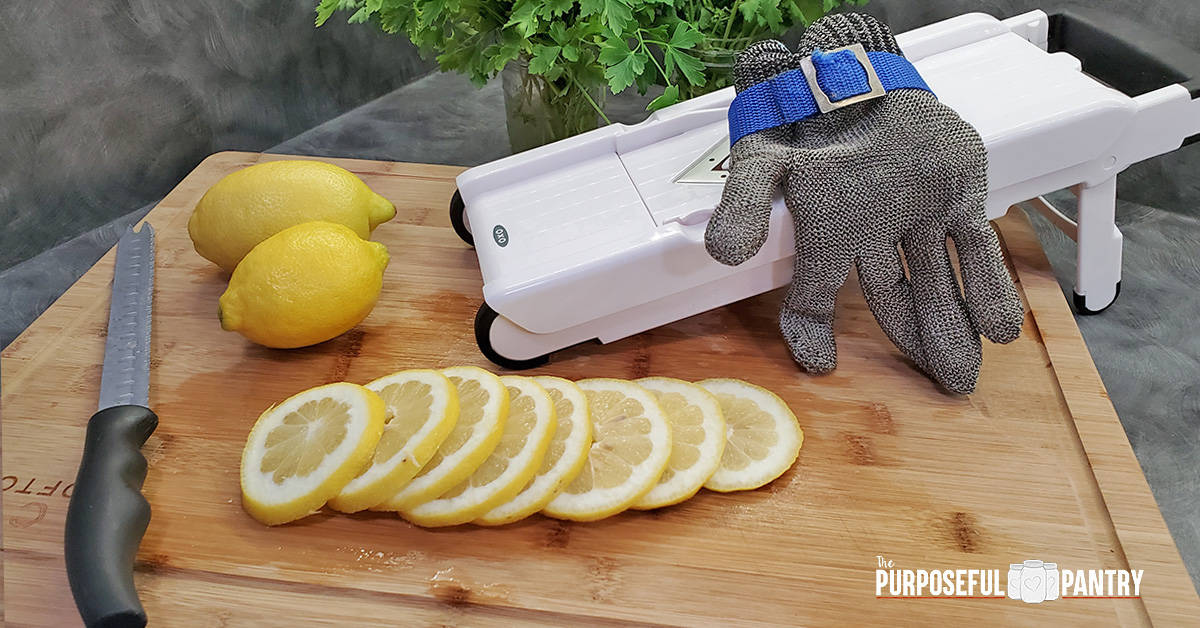
Step Two
Slice lemons into 1/4″ slices (6-7 mm). Using a good serrated bread knife works wonders for cutting lemons by hand, and is my favorite way to cut lemons. You can also use a meat slicer.
Tip: If using a mandoline or meat slicer, cut the end of the orange to give yourself a flat surface.
Tip 2: PLEASE remember to wear a protective cutting glove when using a mandoline. Even if you can use the guard that comes with the machine, hands and surfaces become slick.
Step Three:
Place slices on trays. You can pack them fairly close together without overlapping. Some airflow is nice, but they don’t need a ton of space, nor will they shrink much.
Dry at 125°F/52°C or lower for 18-36+ hours.
Darcy’s Tip: While the recommended temperature for fruit is 135°F/57°C, lemons often brown during drying as the sugars brown from the heat. Dropping the temperature can help prevent that, though you do have to add a little more time to the drying process.
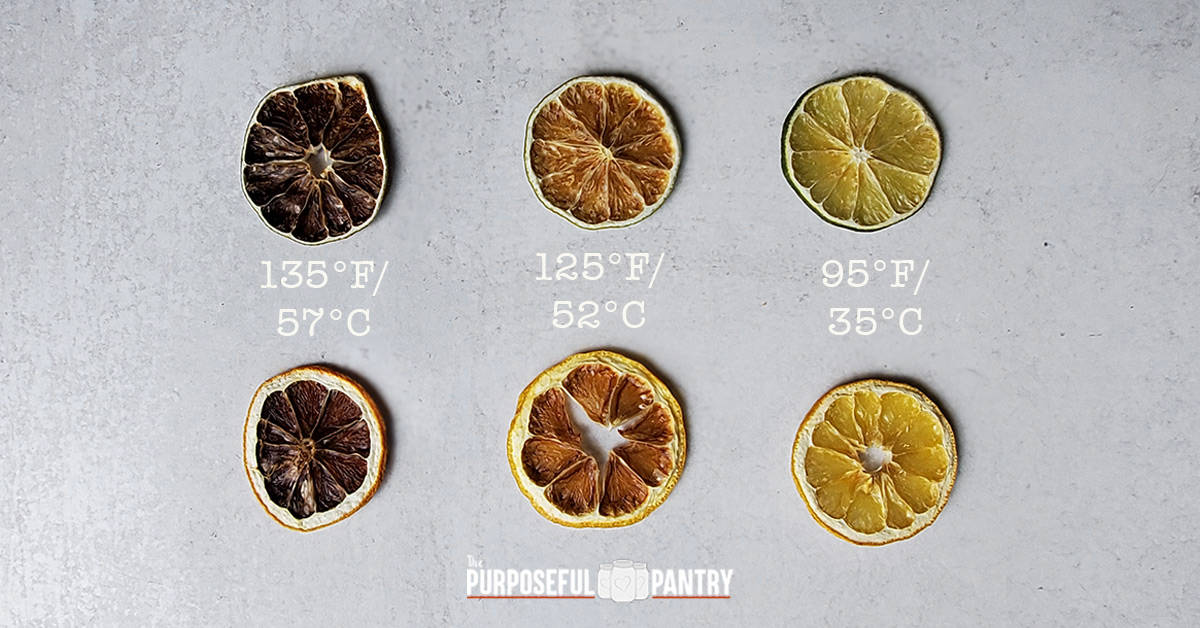
You can use a liner such as silicone mesh or parchment paper, but it’s unnecessary.
Tip: Flip your slices after the three to four-hour mark, and every five hours to keep them from sticking to your trays.
Step Four:
Test. Allow a sample or two to come to room temperature. It is fully dry when you can snap it in two easily, and there is no moisture in the cells of the flesh.
- Place dried food into a jar to allow movement. Do not add moisture absorbers or any other desiccant.
- Shake once a day for 5-7 days.
- Look for signs of sticking, clumping, or moisture buildup.
- If you have clumping or sticking to the side of a jar, if it is removed with a gentle shake, it is fine.
- If it takes significant shaking to remove it or break it up, place back into the dehydrator to dry more.
- If you see mold of any kind, throw food away and sanitize the jar.
- Look for signs of sticking, clumping, or moisture buildup.
- Once complete, store in an airtight container in a dark, cool, dry place if possible.
Step Six:
Store in an airtight container for up to eighteen months, though you’ll likely get a much longer time with proper storage techniques.
Blanching Lemons for Drying
If you’ve had dried lemonss before and felt they were just too bitter and sour for you, I found a great solution!
Blanching lemons before dehydrating helps remove some bitterness from the fruit, making your final product taste more like lemon (while still sour) and a little less like the bitter pith. Give it a try the next time you dry lemons!
Steps:
- Slice lemons.
- Blanch in boiling water for 2 minutes.
- Immediately place into an ice bath to stop the cooking process.
- Dehydrate using the above directions.
Oven Directions:
- Slice citrus into ¼” slices.
- Place parchment paper onto a metal cooling rack.
- Place lemon slices in a single layer.
- Turn the oven to the lowest temperature, preferably 170°F/60°C or below.
- Use a wooden spoon or another oven-safe silicone mitten to crack the door if it’s too hot.
- Flip citrus after 2 hours.
- Dry until completely dry, approximately 4-6 hours.
- Store as above.
How to Use Dried Lemon Slices
Your dehydrated slices will look so pretty in your containers, but they have many more uses than simply throwing them in a potpourri bowl.
- Roast chicken: Place slices in the cavity or make a bed for the chicken to sit on.
- Dry lemon slices can be used on fish or other seafood, or as a base to lay on during the baking process.
- Mix with pepper, grind, and make lemon pepper seasoning
- Slip your dried lemon wheel into a glass of water or tea to bring a bright orange flavor.
- Add a citrus weel onto the rim of your glass as a garnish on cocktails
- Create a citrus garland with lemon, orange, and lime slices. Remember to spray with a protective coating if displaying any citrus on a wreath or other decoration for any period of time to seal it.
- Simmer in a pot with cinnamon sticks, cardamon, and allspice for an autumn/winter ambiance
LEARN MORE: How to use Lemons as a Pretreatment for Drying Fruits!
How to Dehydrate Lemon Zest
If you want the zest from any citrus variety, you can do it on its own, and still dehydrate the leftover citrus slices. The dried lemon peel can store easily for about a year.
- Use your favorite lemon zester to remove the zest (minus the white pith), lay between two paper towels, and allow to air dry for a day or so.
- You can also place them in a coffee filter or onto dehydrator trays on your dehydrating trays and dry at 95°F/35°C until dry.
- Peel the lemon like an apple, and place the zest slices onto dehydrator trays to dry at 95°F/35°C until crisp (approximately 8 hours).
Store in an airtight container and use in place of fresh zest if you’re out, by grinding in a coffee grinder or finely chopping into small bits.
Want to see how this works? You can check out this video of how to dehydrate lemon zest.
Dehydrating Citrus Varieties
You can get more specific information on drying your favorite type of citrus here:
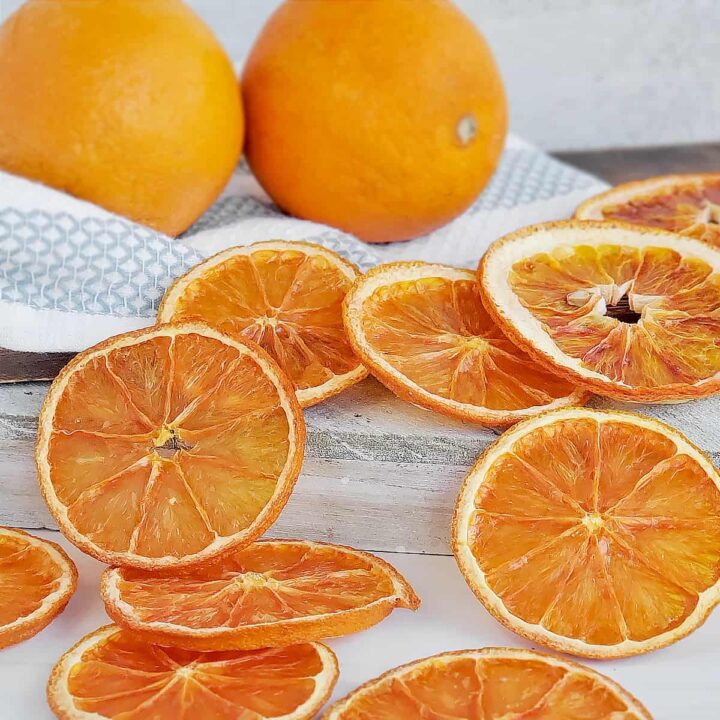
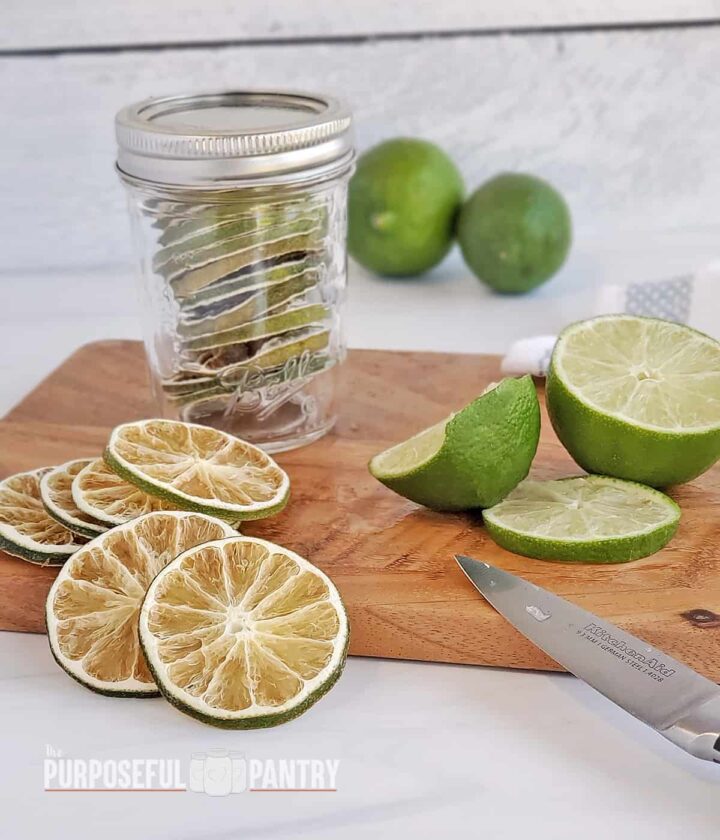
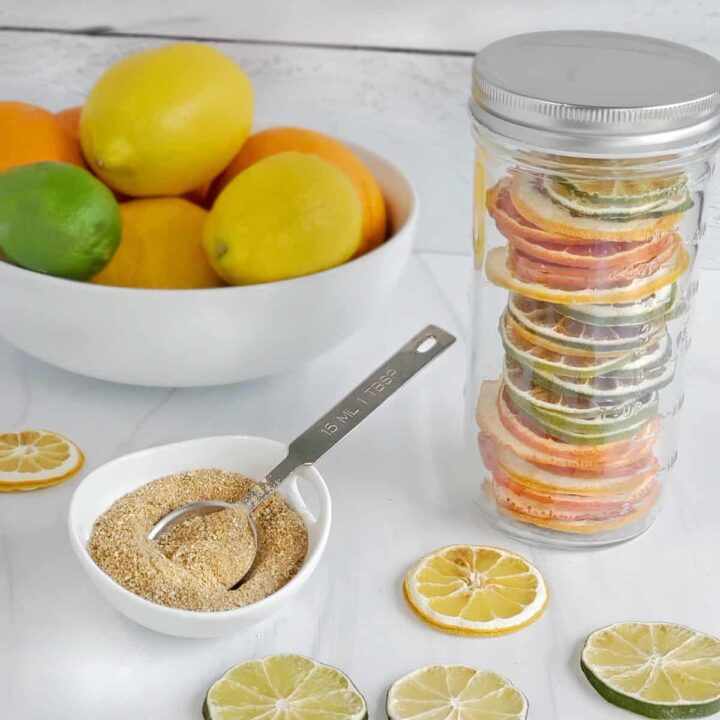
- Citrus
- Grapefruit
- Lemon
- Lime
- Orange (including Mandarin, Tangerine, Cuties, Cara Cara, etc.)
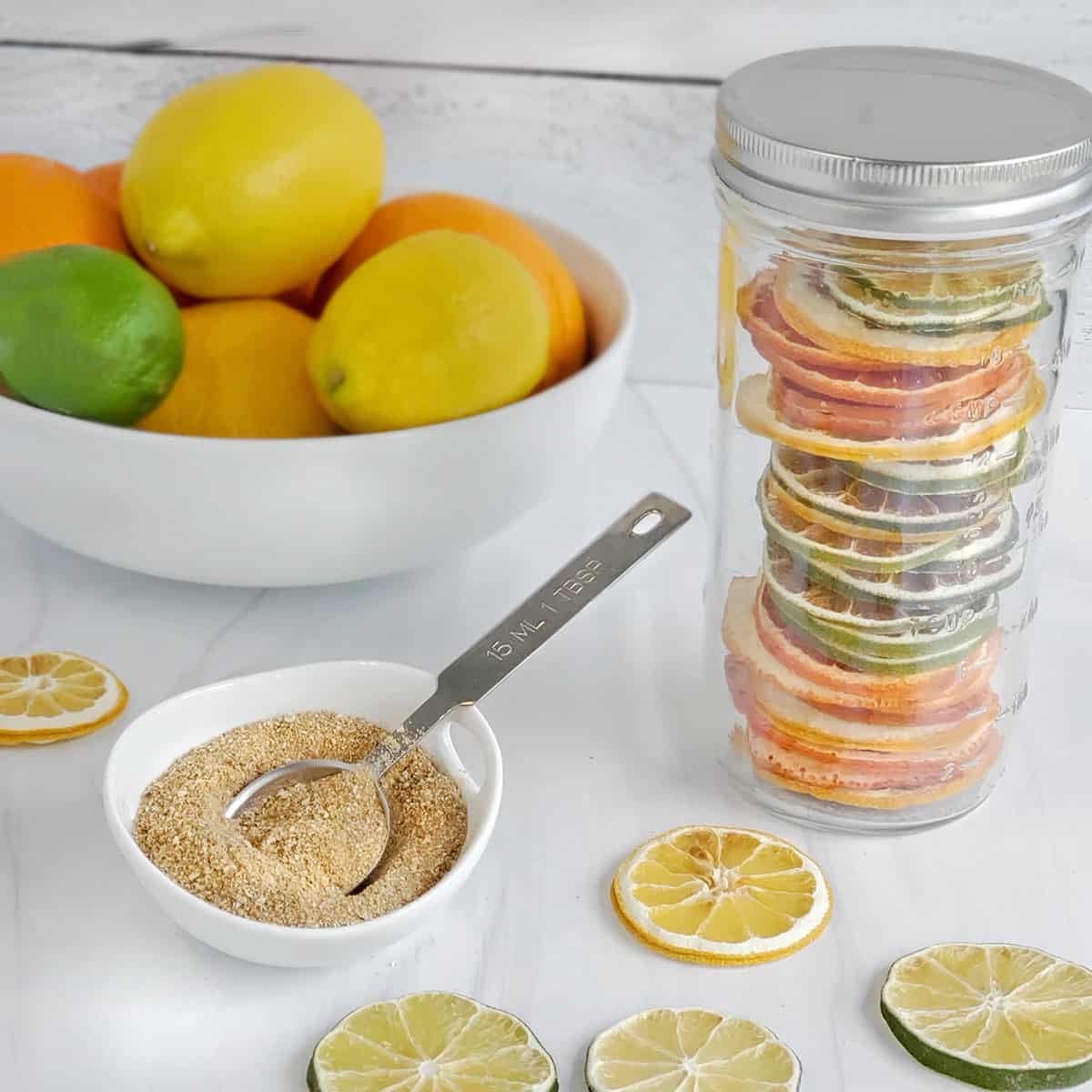
How to Make Lemon Powder
Dry fruit thoroughly with the instructions above. Your lemon slices must be completely dehydrated before powdering.
- Break slices up into the grinder of your choice. I often use a NutriNinja bullet blender, but a coffee grinder or large blender work well, too.
- Pulse your grinder four or five times before commencing to a sustained grind. Please follow the instructions for your particular grinder.
- Condition: Place powder on parchment paper on a cookie sheet in a warmed (but off) oven OR back into your dehydrator in coffee filters, muffin papers, etc. to dry for 15-30 minutes.
- Allow to come to room temperature, then store in an airtight container, preferably with a moisture absorber. Follow these tips to help prevent clumping in orange powder.
Darcy’s Tips
- Use a tea ball or a reusable tea bag to infuse the powder into a drink. It does not dissolve like a drink mix or freeze-dried powder will. It’s the solids of the fruit so that you will be left with some solids in your drink.
- Mix with other powders, such as strawberry or raspberry, to increase the flavor.
- Give powder a little time to infuse your drink.
- Add to herb mixes for a lemon touch!
LEARN MORE: 25+ Ways to Use Fruit Powder
Commonly asked questions
Typically, most dehydrated foods are best within a twelve to eighteen-month window that you dry them. However, with proper airtight storage techniques, you’re likely to get much longer time from them.
While lemon peels are edible, you need to weigh the organic vs. conventional citrus debate about clean fruit.
Lemonade is made from the juice and pulp of oranges. With dehydrated slices, you can flavor water with the essence of lemon. Place lemon slices in a jug of water to allow them to soak for a day or so, add simple syrup, and have something similar to lemonade.
Time is relative when dehydrating. It depends on your machine, your home’s humidity, the moisture in your fruit, how thick you’ve cut the slices, etc. Use the time mentioned as a window of time, not an exact one. Keep drying if they aren’t fully dried, yet!
Yes, in two cases. Using too high heat in your dehydrator or oven can cause the sugars to brown. They aren’t necessarily burned, but turning down the temperature can really help. The other issue is storage. Lemons and other citrus stored where direct sunlight can get to them will degrade and turn brown over time. Airtight containment in a dark, cool, dry place is best.
Air drying lemon zest is the easiest way, but you can also use a dehydrator to dry them (95°F/35°C) or freeze them in portion-sized mounds. They last for a year or so dried.


Dehydrate Lemons
Equipment
Ingredients
- Lemons Works with any variety
Instructions
- Wash lemons well
- Slice into 1/4 slices
- Dry at 125F°C / 52°C for 18-36 hours
- Dry when they snap when cooled and no moisture is evident
- Condition
- Store in an airtight container
Oven Directions
- Slice into 1/4" slices
- Place parchment paper onto a metal cooling rack
- Place lemon slices in single layer
- Turn oven to lowest temperature, preferrably 170F/60C or below
- Flip lemons after 2 hours
- Dry until completely dry approximately 4-6 hours
- Store as abovel
Video
Darcy’s Tips
-
- Roast chicken: Place slices in the cavity or make a bed for the chicken to sit on.
-
- Place slices on fish to bake.
-
- Slip into a glass of water or tea to bring a bright citrus flavor.
-
- Dip in chocolate to eat as treats or share as gifts
-
- As a garnish on cocktails
-
- Decorating (Remember to spray with a protective coating if displaying citrus on a wreath or other decoration for any period of time to seal it)
-
- Potpourri
-
- Use your favorite citrus zester to remove the zest (minus the white pith), lay between two paper towels, and allow to air dry for a day or so.
-
- You can also place them in a coffee filter or onto dehydrator trays on your dehydrating trays and dry at 95°F/35°C until dry.
-
- Peel citrus like an apple, and place the zest slices onto dehydrator trays to dry at 95°F/35°C until crisp (approximately 8 hours).
Nutrition
Nutritional information is an estimation only. Nutrient information for dehydrated foods is based on fresh. Use 1/4 of the servicing size for the same nutrient information. Thus 1 Cup of fresh fruit has the same sugars as 1/4 dried.
©ThePurposefulPantry. Photographs and content are copyright protected. Sharing of this recipe’s link is both encouraged and appreciated. Copying and/or pasting full recipes to any social media is strictly prohibited.


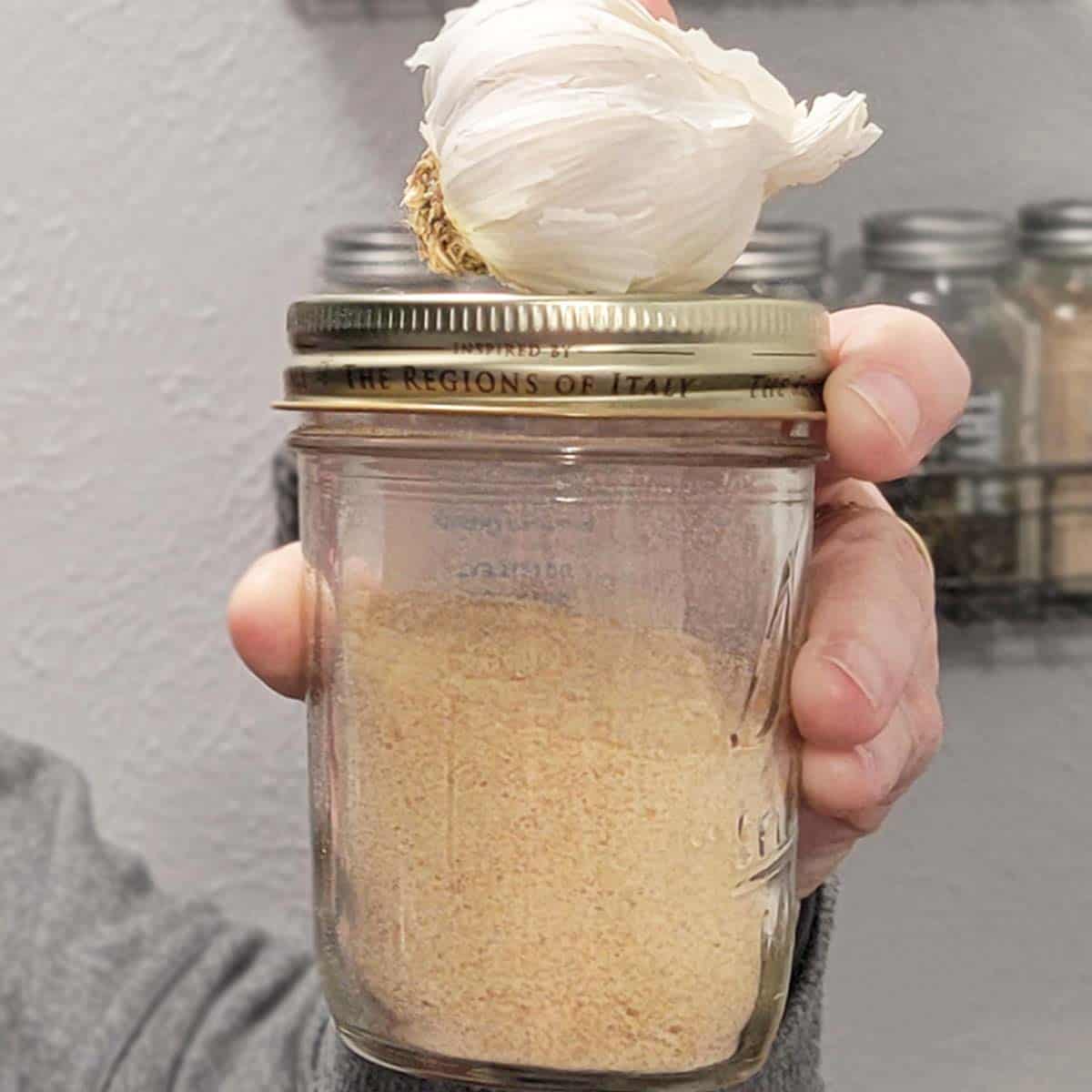
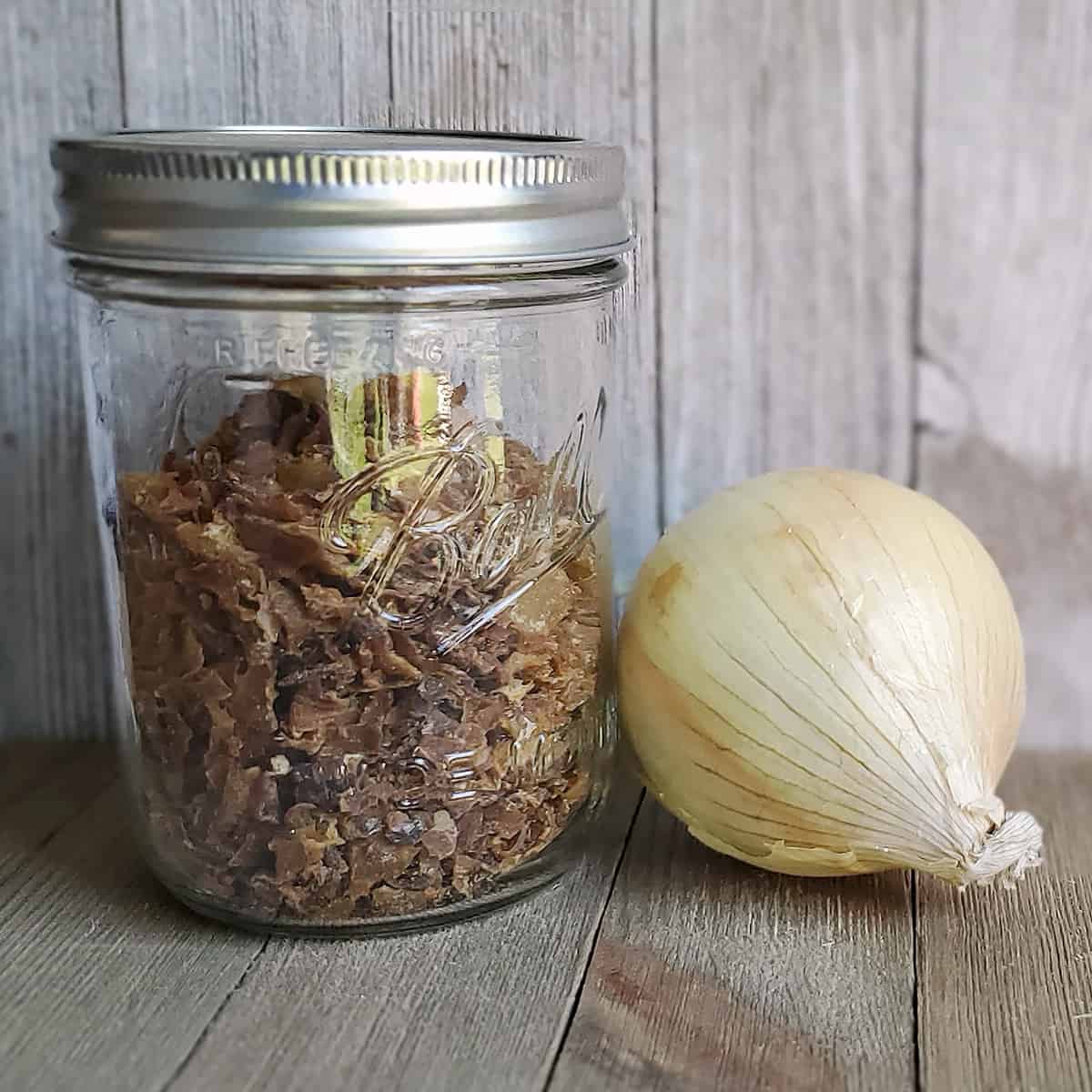
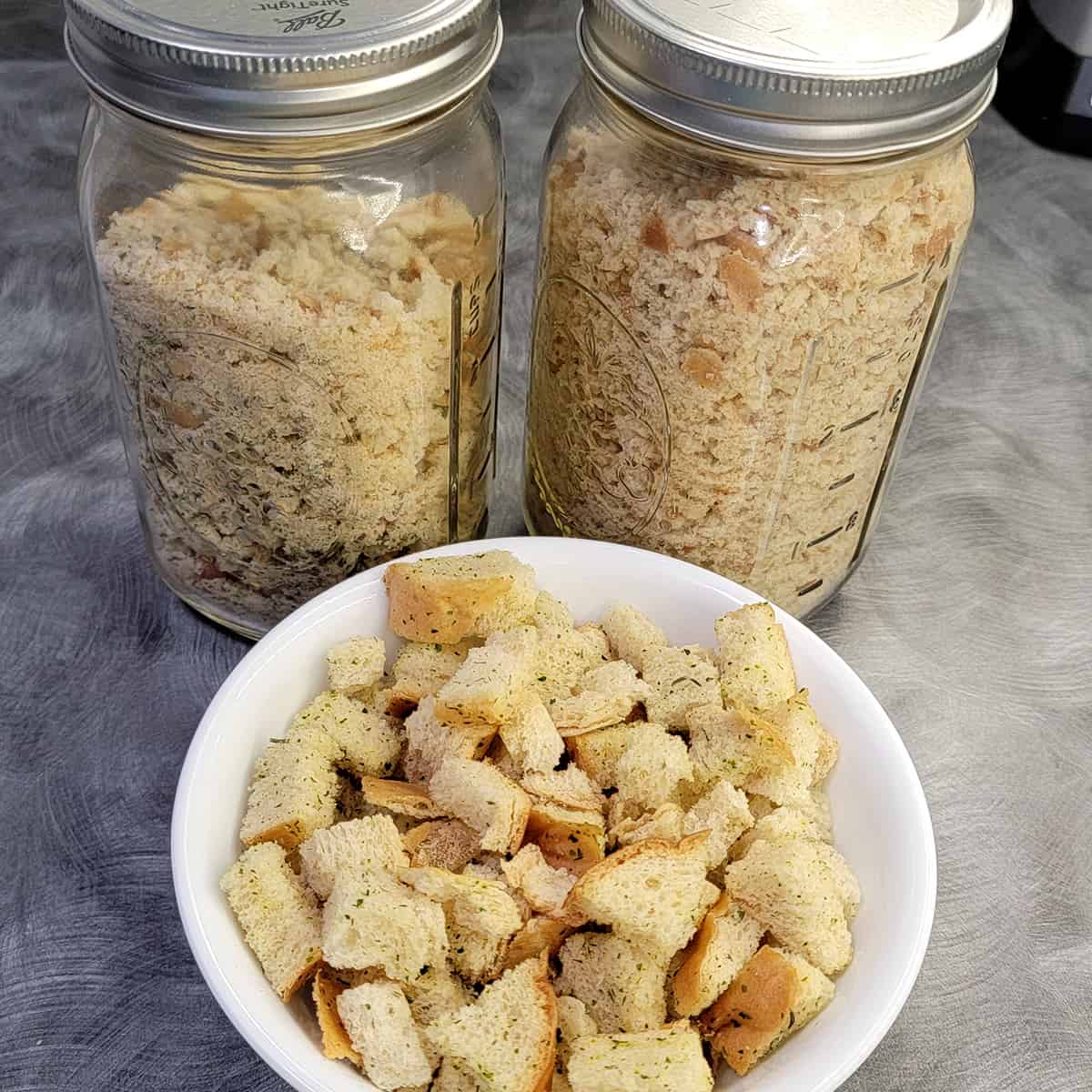
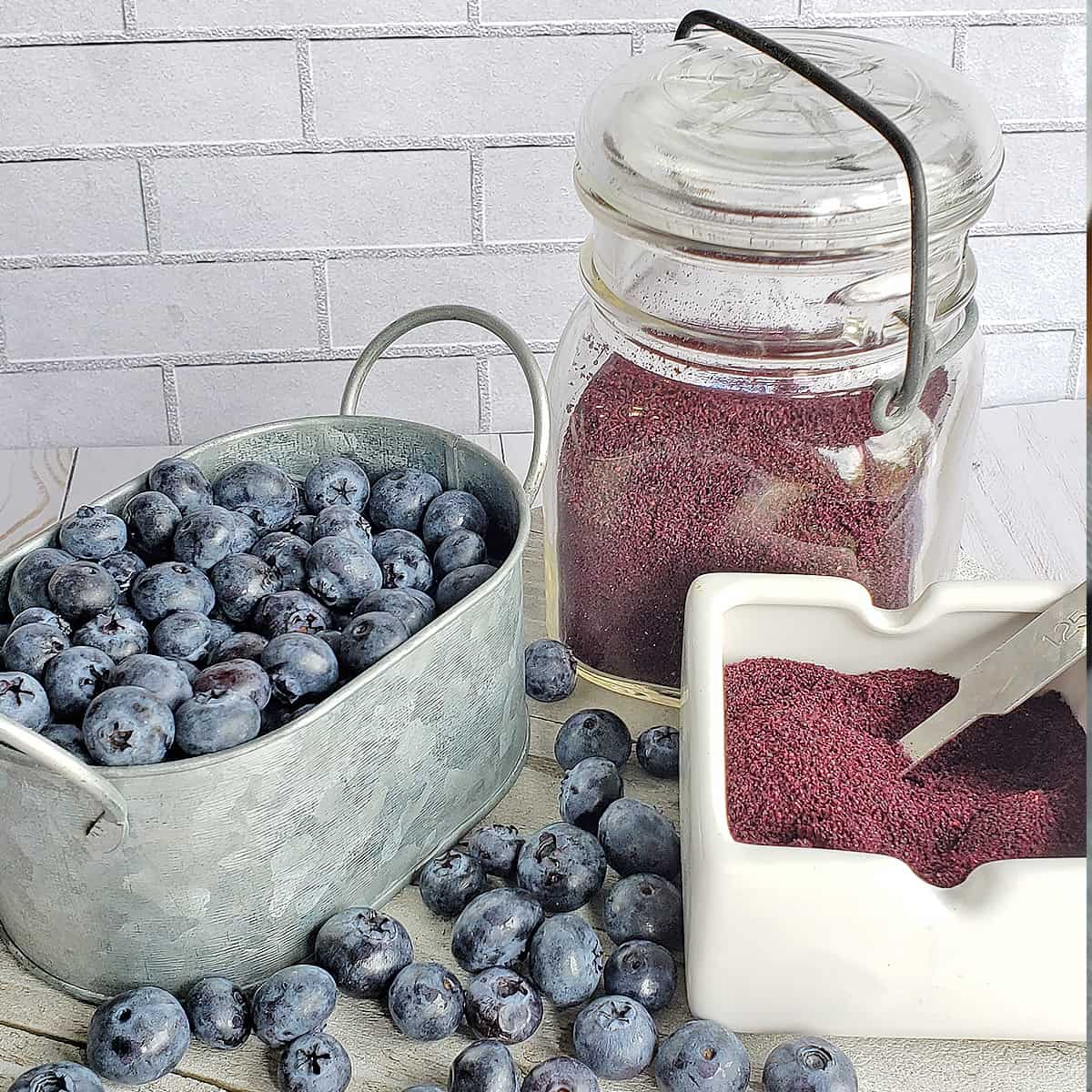
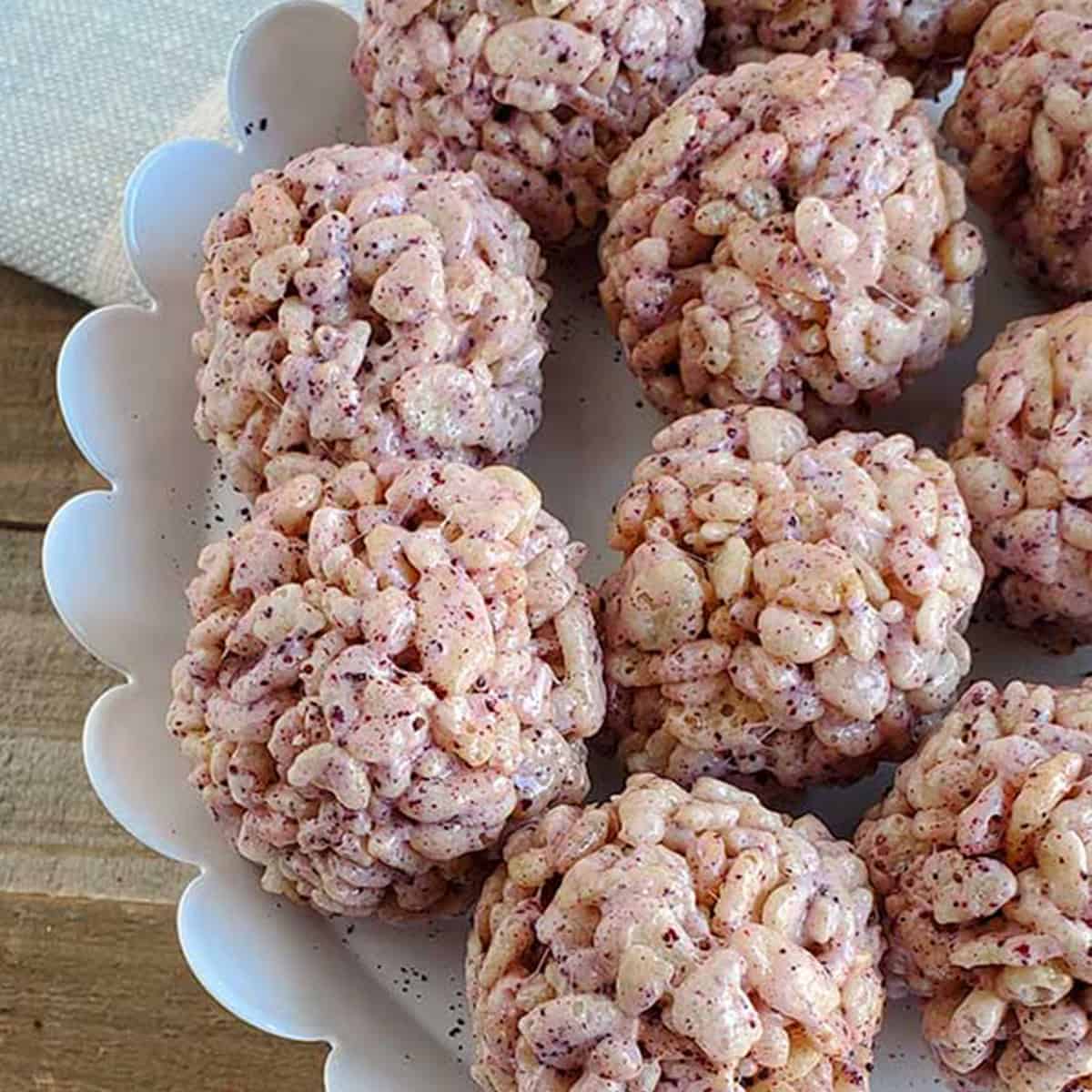
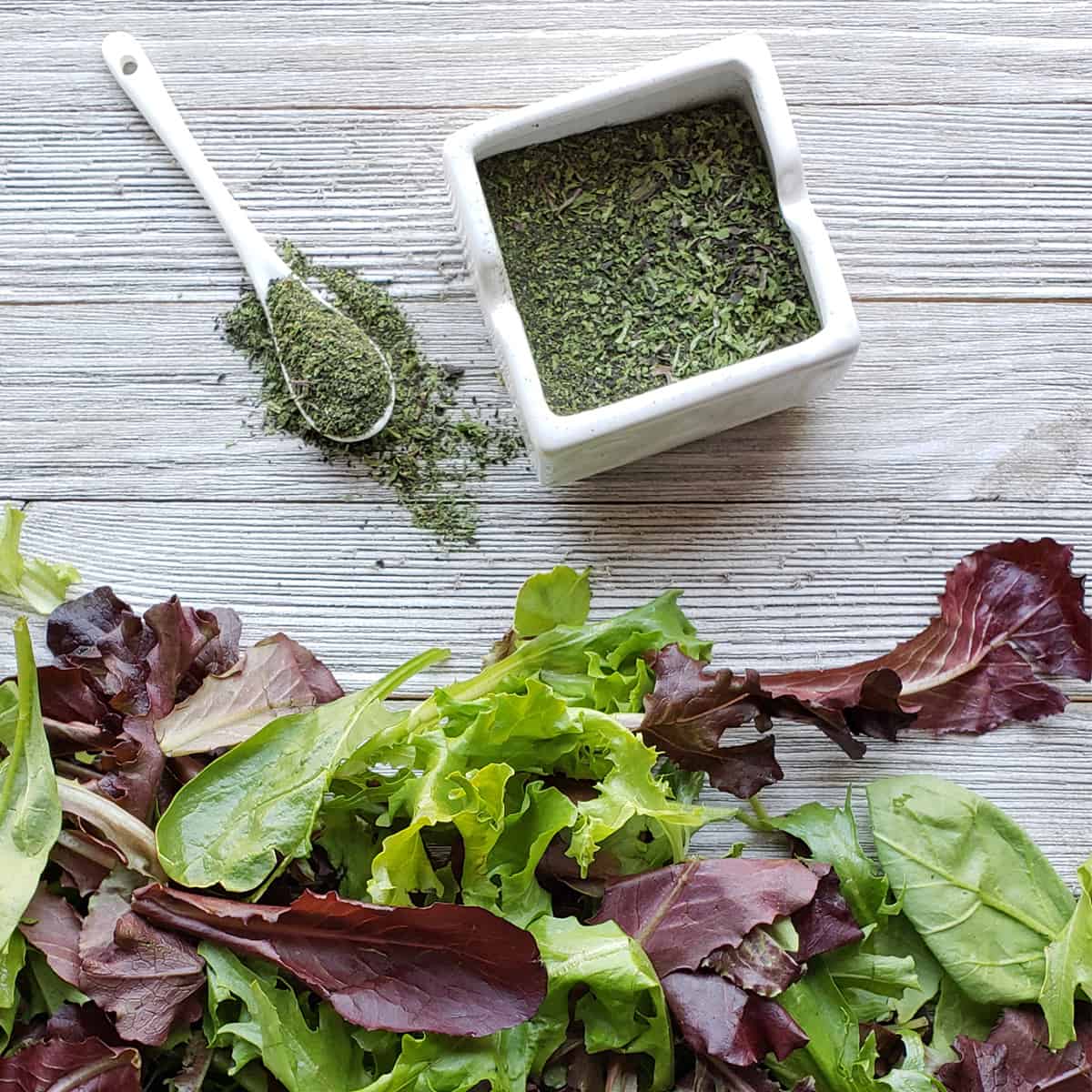
Is lemon powder suppose dissolve? Because when I put it water it doesn’t it looks like rehydrate lemon granules.
No- as the notes say – this is still the fiber of the fruit that is dehydrated. It’s not a dissolvable drink mix that you can dry or do from from freeze dried. THat’s why I suggest using a tea ball or reusable tea bag to contain it if you don’t like the solids in your drink container. But given time, it will infuse the flavor into your water.
When making lemon powder are you grinding up the dehydrated slices with skin on?
Yes but it’s up to you to do or not.
Hi Darcy
I followed your way of dehydrating lemons worked great but a week later the lemons are now sticky What did I do wrong or do I start again or are they still good?
You didn’t do anything wrong – but here are my thoughts: They weren’t really dry enough. They were stored in a jar with way too much air. If you opened and shut them a lot and there was a lot humidity – you were introducing humidity every time. Just throw them back in, dry them more, and maybe use a moisture absorber with them once you store them.
Thank you I will do that by the way, I love your youtube channel
Is this the same process if they are candied.
I have some left over from making a lemon syrup and I was going to put them in the dehydrator. Not sure if they will just end up burning because of the sugar or not.
Yes, but drying time will be different because of the added sugars.
Do you use white vinegar or apple cider vinegar?
Thanks
Amber
Regular vinegar.